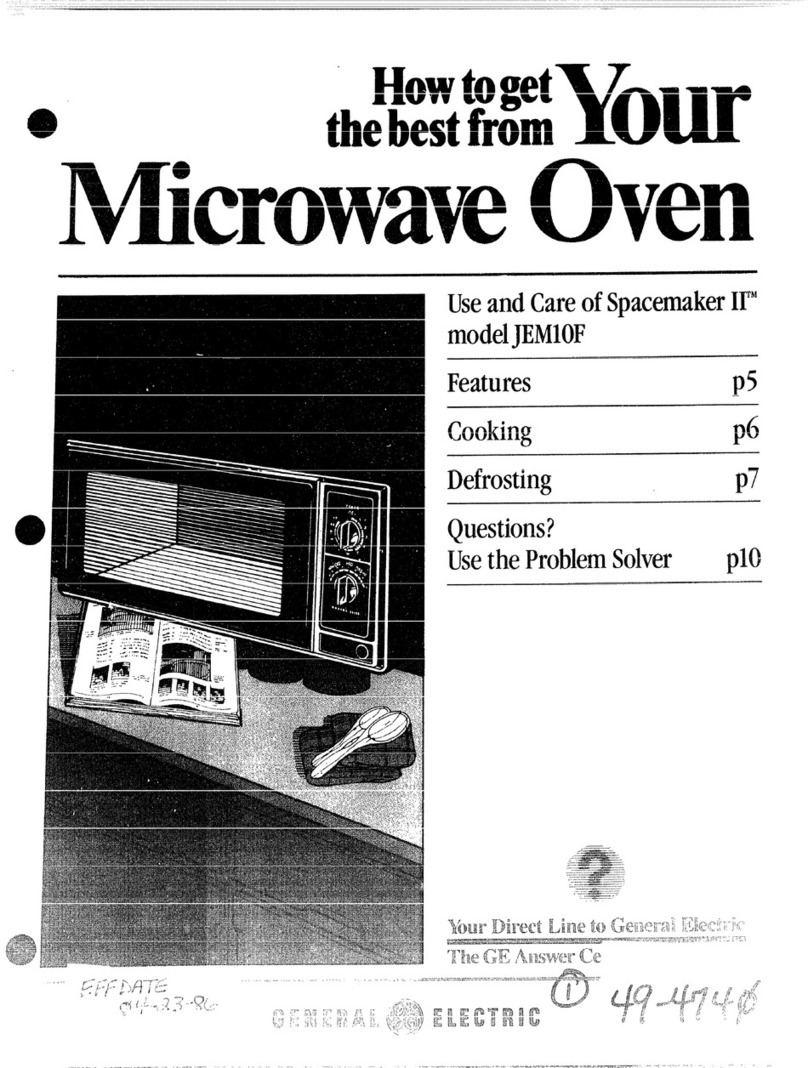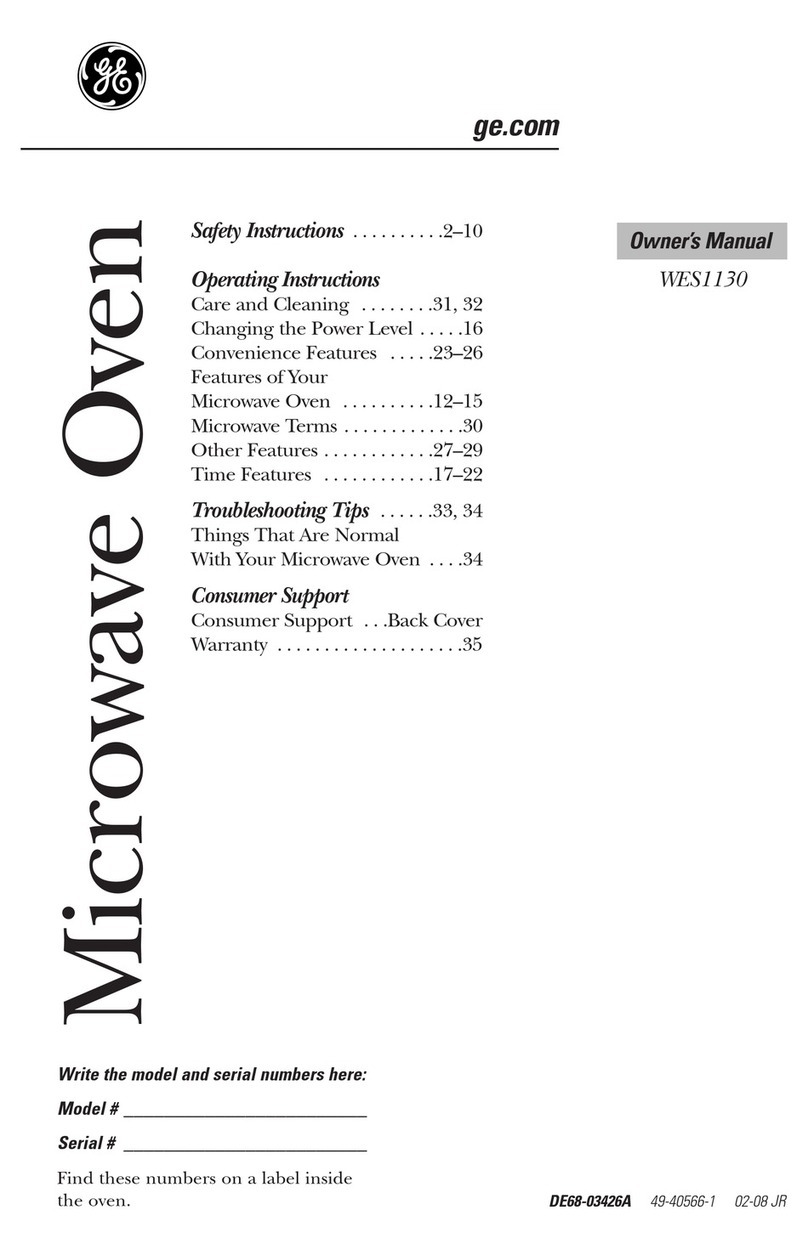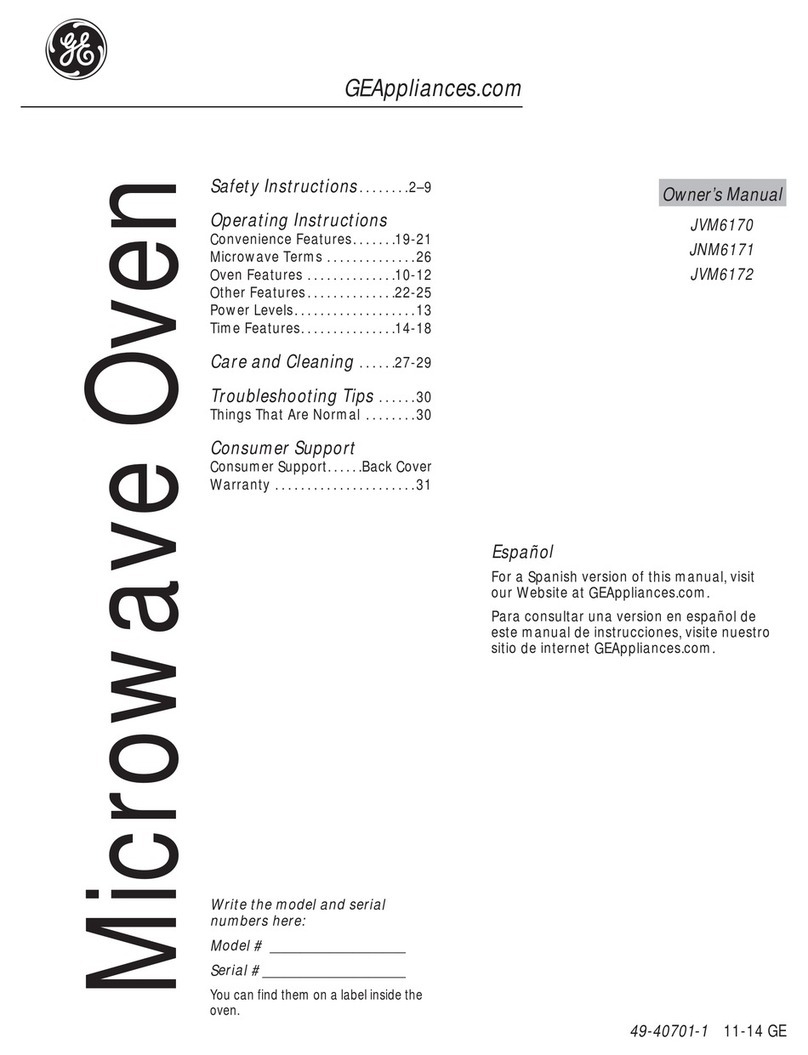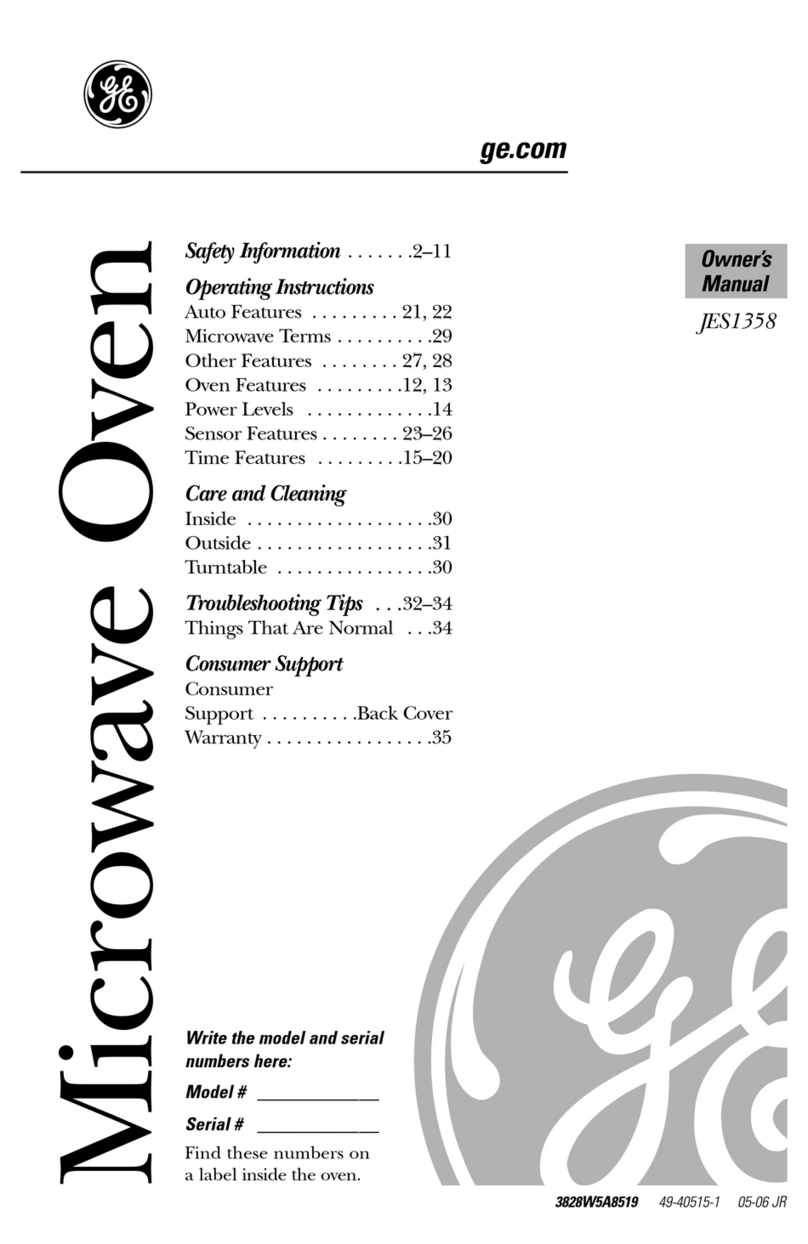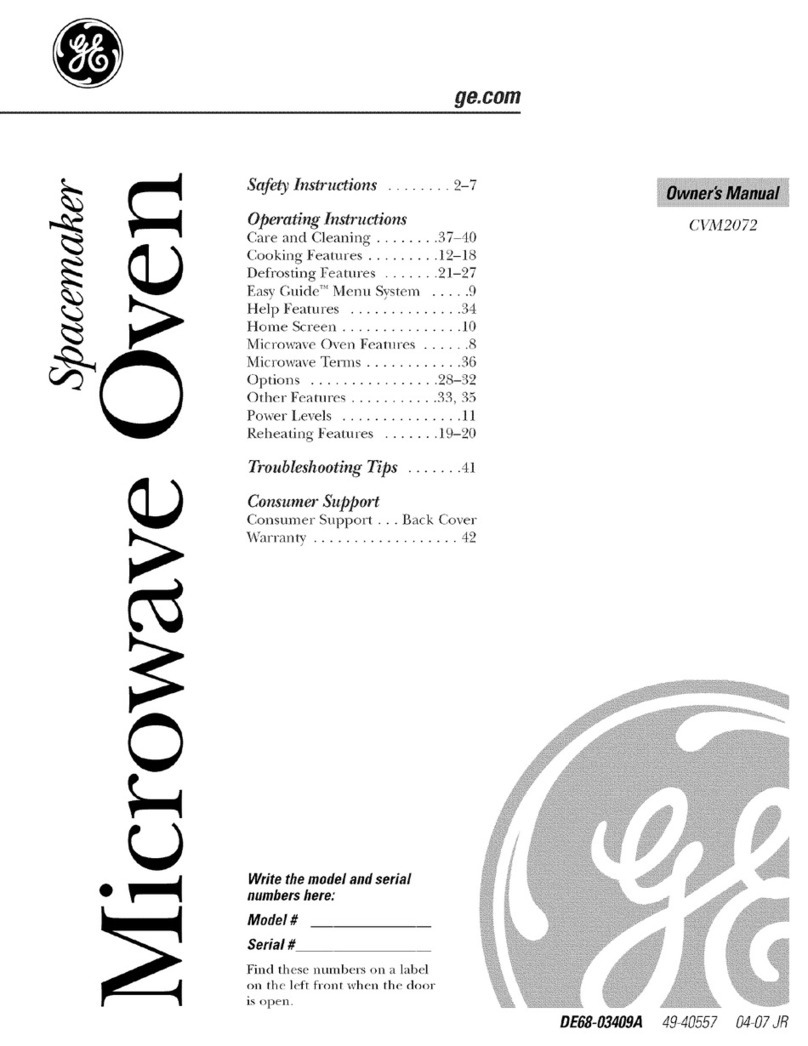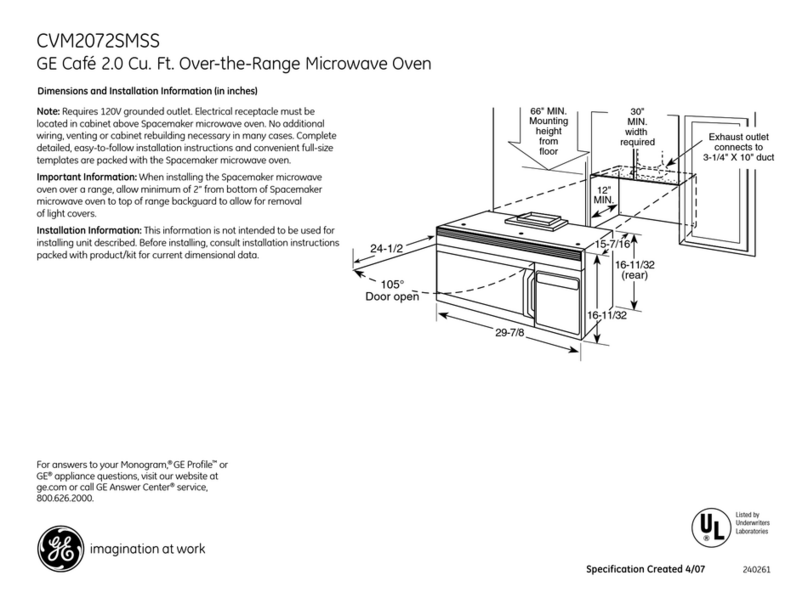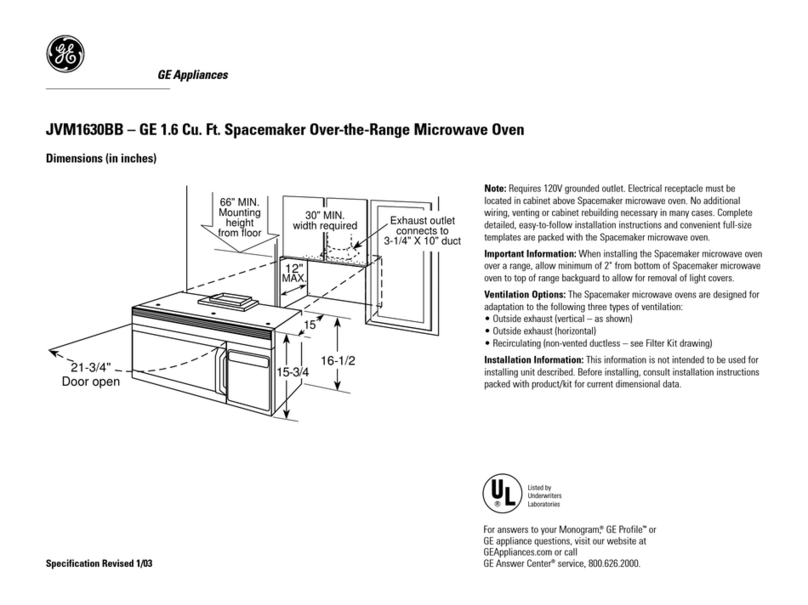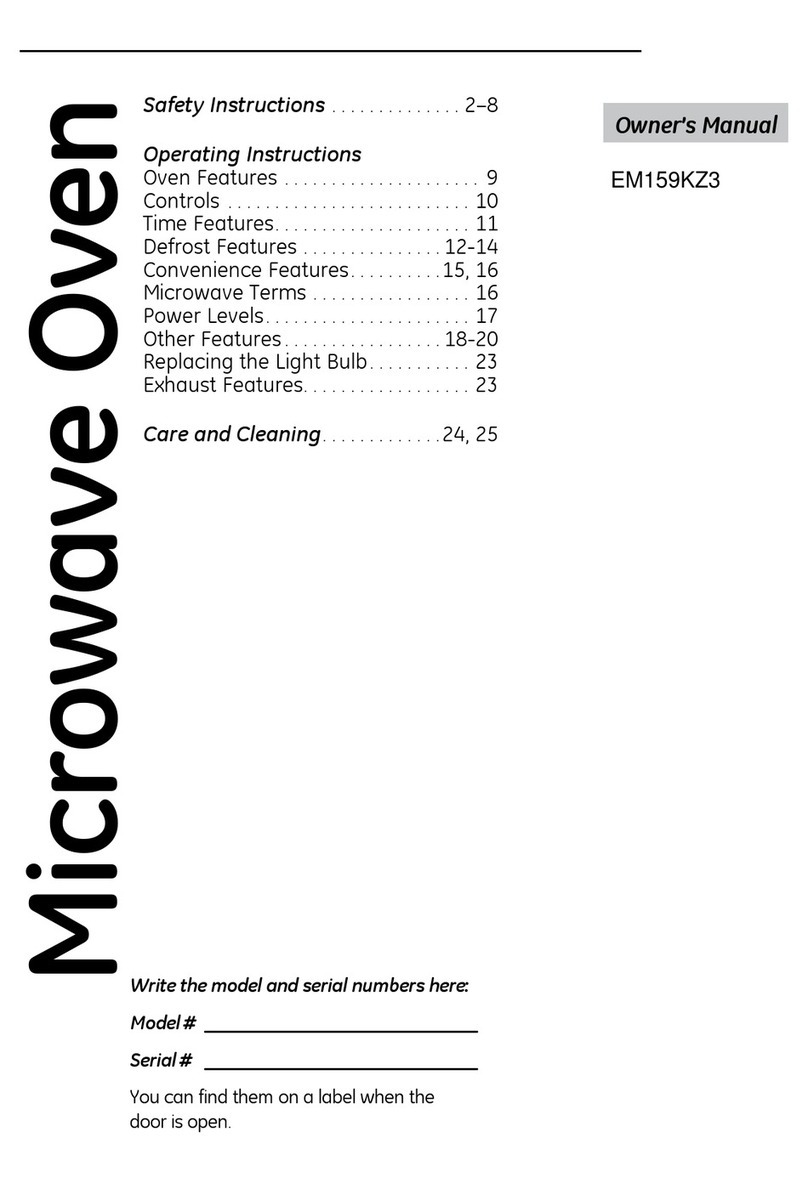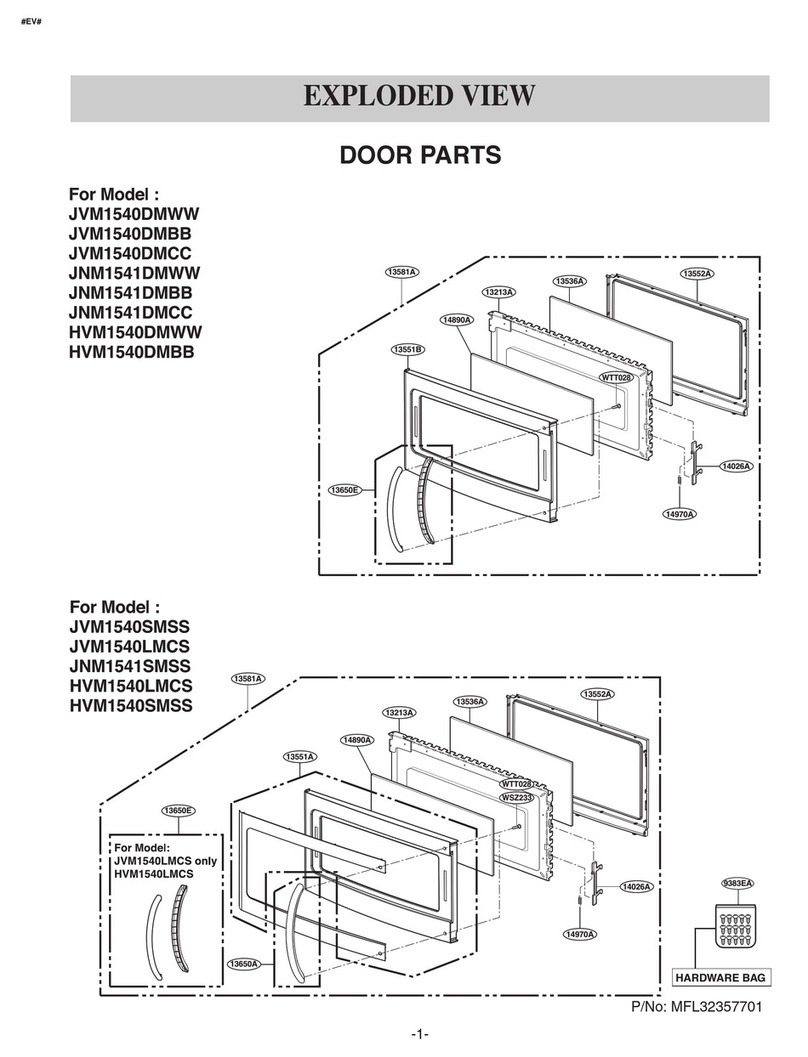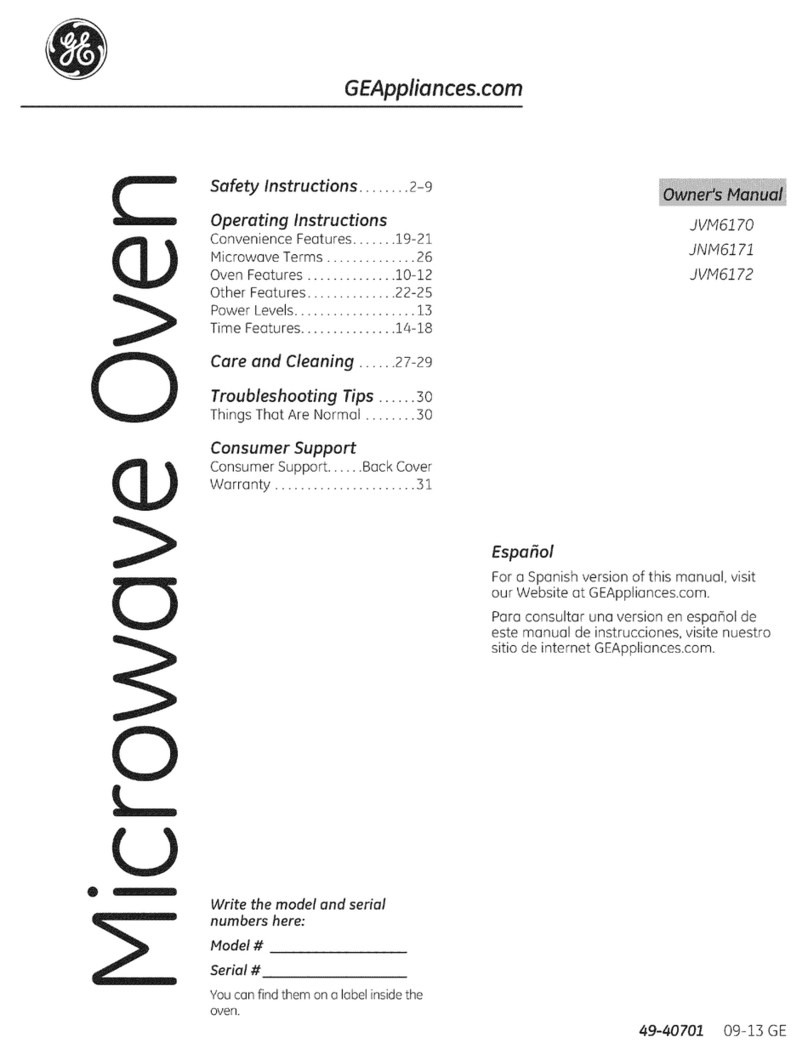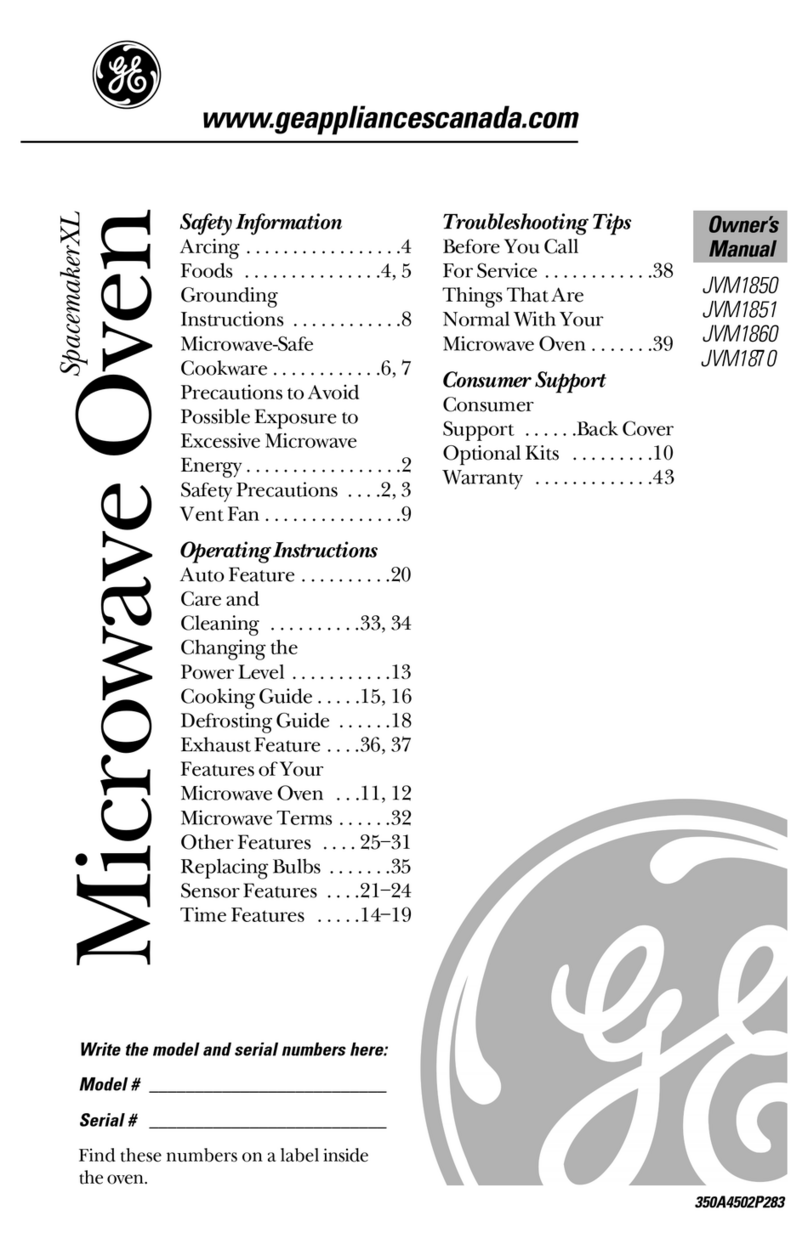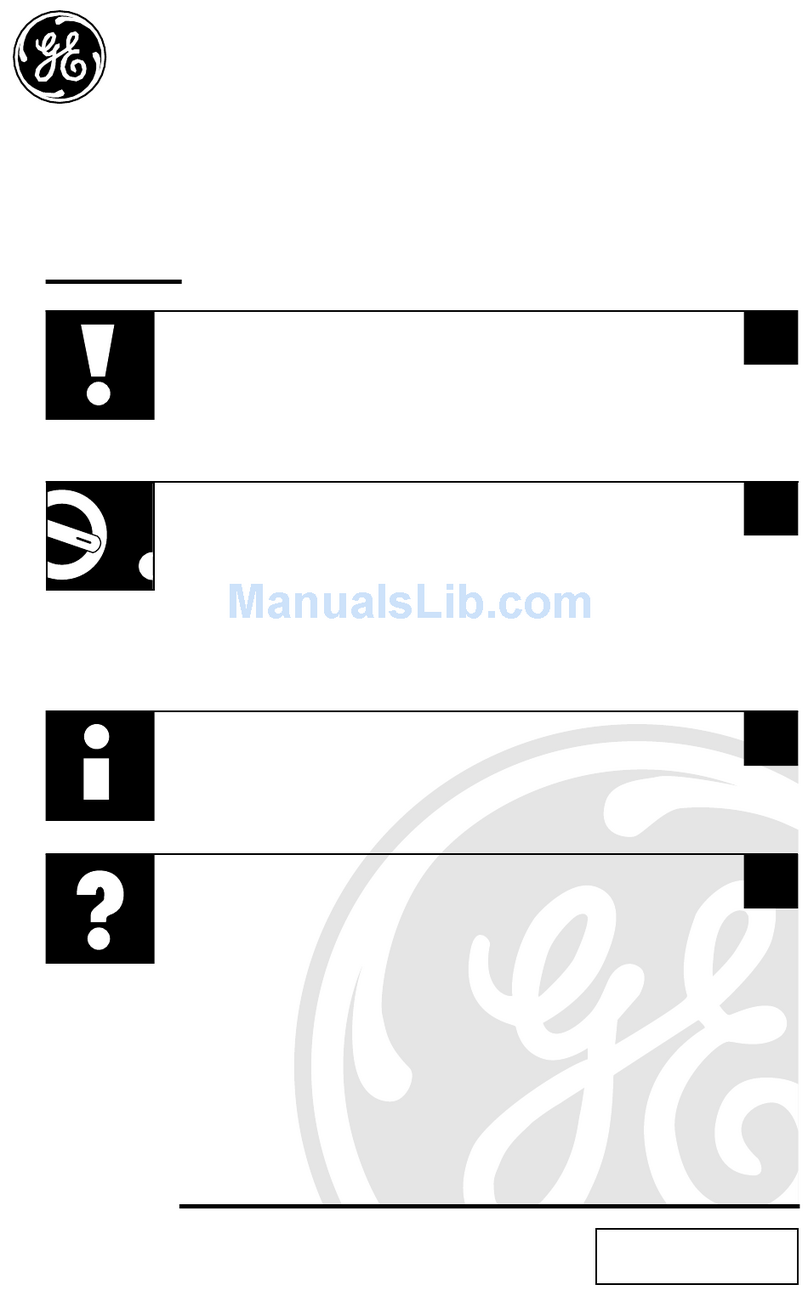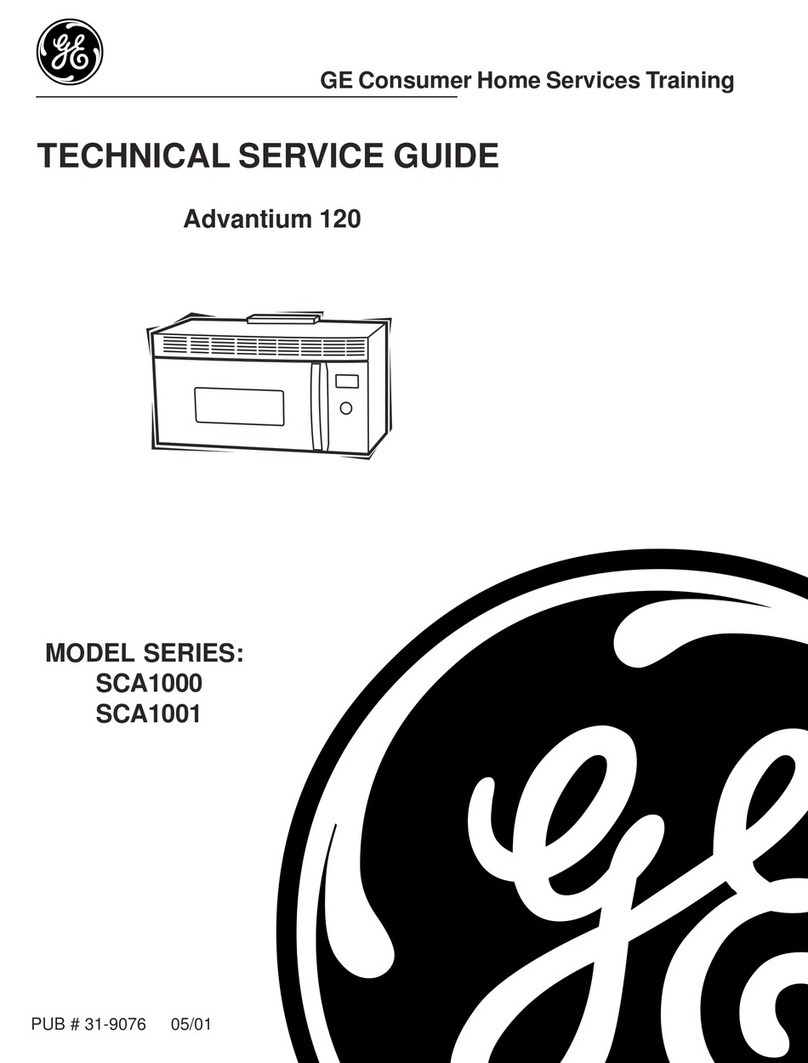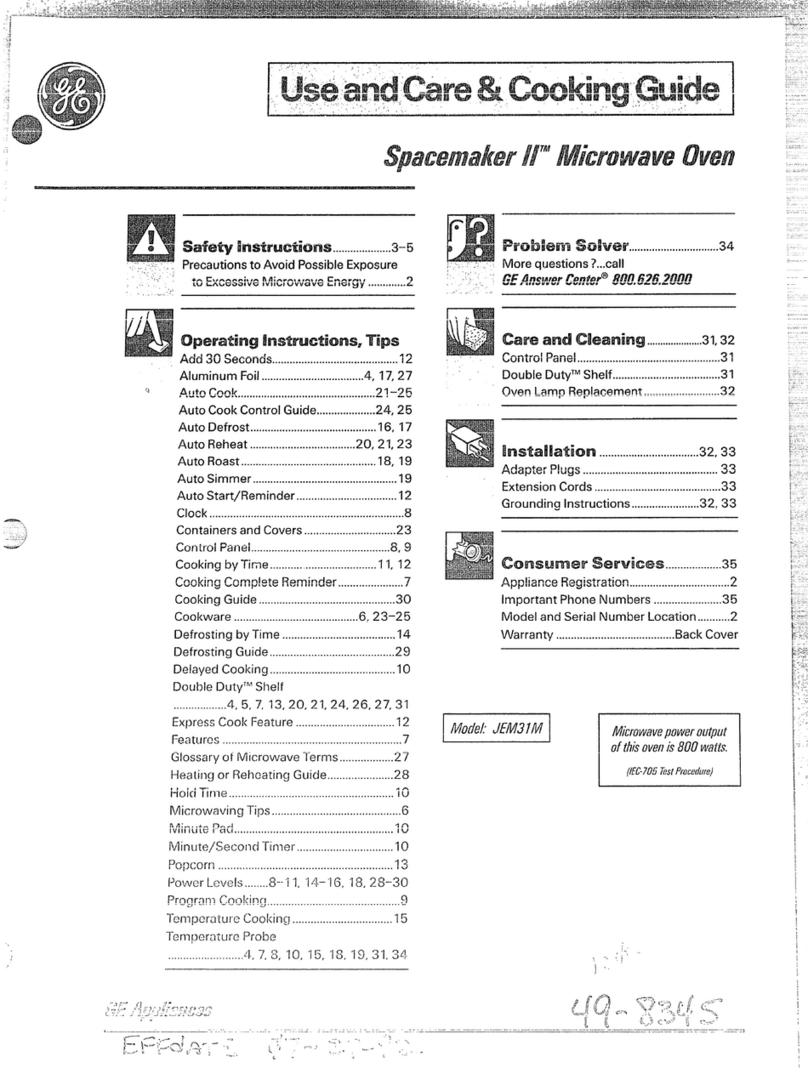IMPORTMT SAFETY INSTRUCTIONS (continued)
●To reduce the risk of fire in
the oven cavity:
–Do not overcook food.
Carefhlly attend appliance if
paper, plastic or other
combustible materials are placed
inside the ovento facilitate
cooking.
–Remove wire twist-ties from
paper or plastic bags before
placing bags in oven,
—Do not use your microwave
oven to dry newspapers.
–Do not use recycled paper
products. Recycledpaper towels,
napkinsand waxpaper can contain
metal flecks which may cause
arcing or ignite. Paper products
containingnylon or nylon
filaments shouldbe avoided, as
theymay also ignite.
—Do not pop popeorri in your
microwave oven unless in a
special microwavepopcorn
accessory or unless you use
popcorn labeled for use in
microwaveovens.
–Do not overcook potatoes.
They could dehydrateand catch
fire, causing damage to your oven.
–Do not operate the oven while
empty to avoid damage to the
oven and the danger of fire. If
byaccident the oven shouldrun
empty aminute or two, no harm
is done. However,try to avoid
operating the ovenempty at all
times—itsavesenergy and
prolongslife ofthe oven.
●If materials inside the oven
should ignite, keep ovendoor
closed. turn ovenoff, and
disconnect the powercod. or
shut offpowerat the fuse or
circuit breaker pane}.
●Some products such as whole
eggs and sealed containers-for
example. closed glassjars—may
explodeand should not be heated
inthis oven.
●Don’t defrost frozen
beverages in narrow necked
bottles (especially carbonated
beverages). Even if the container
is opened, pressure can build up.
This can cause the container to
burst, resulting in injury.
●Use metal only as directed in
cookbook. Foil strips as used on
meat roasts are helpful when used
as shownin cookbook.
TV dinners maybe microwaved
in foiltraysless than 3/4”high;
remove top foil cover and return
tray to box. When using metal in
microwave oven, keep metal at
least 1inch away from sides of
oven.
●Cooking utensils may become
hot because ofheat transferred
from,the heated food. PothoMers
maybe needed to handle the
utensil.
QSometimesYthe cooking tray
can become too hot to touch. Be
careful touching the cooking tray
during and after cooking.
●Foods cooked in liquids (such
as pasta) maytend toboil over
more rapidly than foods
containing less moisture. Should
this occur, refer to page 19for
instructions on howto clean the
inside ofthe oven.
●Thermometer—Do not use a
thermometer in foodyou are
microwavingunless the
thermometer is designedor
recommended for use in the
microwaveoven.
@Remove the temperature
probe from the oven when not
in use. If you leavethe probe
inside.the ovenwithoul inserting
it in foodor liquid, and turn on
microwaveenergjr,it can create
electrical arcing in the o~’en.and
damage ovenvans.
4
●Plastic utensils—Plastic
utensils designed for microwave
cooking are very useful, but
should be used carefully. Even
microwaveplastic may not be as
tolerant ofovercookingconditions
as are glass or ceramic materials
andmaysoftenor char if subjected
to short periods ofovercooking.
Inlongerexposurestoovercooking,
the food and utensils could ignite.
Forthesereasons:1)Use microwave
plastics only and use them in
strict compliance with the utensil
manufacturer’srecommendations.
2) Do not subject empty utensils
to microwaving.3) Do not permit
children to use plastic utensils
without complete supervision.
*Boiling eggs is not
recommended in amicrowave
oven. Pressure can build up
inside eggyolk and maycause it
to burst, resulting in injury.
*Foods with unbroken outer
~~skin3’such as potatoes,
sausages. tomatoes, apples,
chicken livers and other giblets,
and eggyolks (see previous
caution) should be pierced to
allowsteam to escape during
cooking.
●%oilabk$’ cooking pouches
and tightly closed piastie bags
should be slit, pierced or vented
as directed in cookbook. H’they
are not. plastic could burst during
or immediatelyaftercooking,
possiblyresulting in injury. Also,
plastic storage containers should
beat least partially uncovered
because they form atight seal.
When cooking with containers
tightly coveredwith plastic wrap,
removecoveringcarefully and
direct steam awayfrom hands and
face,
●Avoidheating baby food in
glass ~ar~,ei’enwith~u{their lids;
especially meat and egg mixtures.
9
.-
4)



